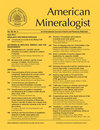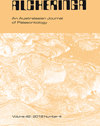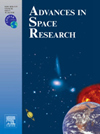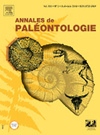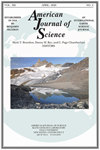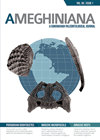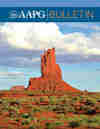期刊简介
OverviewThe award-winning WIREs (Wiley Interdisciplinary Reviews) series combines some of the most powerful features of encyclopedic reference works and review journals in an innovative online format. They are designed to promote a cross-disciplinary research ethos while maintaining the highest scientific and presentational standards, but should be viewed first and foremost as evolving online databases of cutting-edge reviews.WIREs WaterAn important new forum to promote cross-disciplinary understanding of the water environment, and the severe challenges that it faces during the 21st CenturyAn authoritative, encyclopedic resource addressing key topics from the perspectives of earth sciences, biology, engineering, social sciences, and humanitiesHigh-quality content commissioned from expert contributors and peer-reviewed to a rigorous standardContent is fully citable, qualifying for abstracting, indexing, and ISI rankingFor more information, please go to wires.wiley.com/water.Aims and ScopeThe scope of WIREs Water is at the interfaces between five very different intellectual themes: the basic science of water, its physics and chemistry, flux, and things that it transfers and transforms; life in water, and the dependence of ecosystems and organisms on water to survive and to thrive; the engineering of water to furnish services and to protect society; the people who live with, experience and manage the water environment; and those interpretations that we, as a society, have brought to water through art, religion, history and which in turn shapes how we come to understand it. These interfaces are not simply designed to be ways of looking at water through what necessarily must be interdisciplinary perspectives. They are also designed to be outward facing in terms of how water can help to understand wider questions concerning our environment and human-environment interactions.Topics:Engineering WaterThe contributions made by the engineering sciences to the ways in which we engineer and plan water: water, health and sanitation, including water supply, waste and disposal, infectious and waterborne diseases, public health, environmental standards: the sustainable engineering of water, including source protection, water conservation and recycling, resilience to natural hazards, waste and drainage systems, waterproofed urban landscapes, enhancing ecosystems through engineering; planning water including planning concepts, path dependency, retrodiction and prediction, forecasting, holistic analysis of water.Human WaterPerspectives from the social sciences and humanities on our water condition: water governance, including decision-making processes, rules, customs, laws and accountability in water management; the value of water, including water pricing, more-than-economic valuation of water, hidden and embedded water (e.g. in energy, food), alternative definitions of the ‘clean’ and the ‘safe’; the rights to water, including distributive justice, entitlements and their definition, water conflicts across spatial scales; water as imagined and represented, in the creative arts, across world views, in memory and through communication.Science of WaterThe physics and chemistry of water: hydrological processes throughout the hydrological cycle; stocks and flows of water and the matter that it entrains, transports and deposits, at different spatial and temporal scales; water extremes in stocks and flows and there distributions in space and time; water quality, including solutes, sediment and temperature and its control by water flow pathways and transit times; water and environmental change, including climate, land use and flow regulation.Water and LifeThe ecology and biology of freshwater environments: the nature of freshwater ecosystems, including their structure and organisation, inter-connectivity, emergent properties, sensitivity and resilience; stresses and pressures on ecosystems, at the scales of species, habitats and ecosystems, and including multiple stressors; conservation, management and awareness including restoration, the analysis of ecosystem services, questions of spatial and temporal scale and public engagement with freshwater ecosystems.
概述屡获殊荣的WIRES(威利跨学科评论)系列结合了一些最强大的功能,百科全书的参考作品和评论期刊在一个创新的在线格式。它们旨在促进跨学科的研究精神,同时保持最高的科学和陈述标准,但首先应被视为不断发展的前沿评论在线数据库。WIRES水一个重要的新论坛,促进对水环境及其在21世纪面临的严峻挑战的跨学科理解一个权威的,百科全书式的资源,从地球科学、生物学、工程学、社会科学和人文学的角度阐述关键主题委托专家贡献者提供的高质量内容,并按照严格的标准进行同行评审内容完全可引用,符合摘要、索引和ISI排名的条件有关更多信息,请访问 www.example.com :水的基础科学,它的物理和化学,流量,以及它转移和转化的东西;水中的生命,以及生态系统和有机体对水的依赖性,以生存和繁荣;为提供服务和保护社会而进行的水工程;与水环境共同生活、体验和管理水环境的人;以及我们作为一个社会通过艺术、宗教、历史对水的解释,这些解释反过来又塑造了我们对水的理解。这些界面的设计并不仅仅是通过跨学科的视角来看待水。它们也被设计成面向外部,就水如何帮助理解有关我们的环境和人类-环境相互作用的更广泛的问题而言。主题:工程水工程科学对我们工程和规划水的方式所做的贡献:水、保健和卫生,包括供水、废物和处置、传染病和水传播疾病、公共卫生、环境标准:可持续的水工程,包括水源保护、水资源保护和循环利用、抵御自然灾害的能力、废物和排水系统、防水城市景观、通过工程加强生态系统;规划水包括规划概念、路径依赖、追溯与预测、预测、水的整体分析。2人类水从社会科学和人文科学角度看我们的水状况:水治理,包括决策进程、规则、习俗、法律和水管理方面的问责制;水的价值,包括水的定价、对水的超出经济价值的估价、隐藏的和内在的水(例如能源、粮食)、“清洁”和“安全”的替代定义;水权,包括分配正义、应享权利及其定义、跨空间尺度的水冲突;水的想象和表现,在创造性的艺术,跨越世界观,在记忆和通过沟通。水的科学水的物理和化学:整个水文循环的水文过程;在不同的空间和时间尺度上的水的存量和流量以及水所携带、输送和沉积的物质;水量极值及其时空分布;水质,包括溶解物、沉积物和温度,以及水流路径和渡越时间对水质的控制;水与环境变化,包括气候、土地使用和流量调节。水与生命淡水环境的生态学和生物学:淡水生态系统的性质,包括其结构和组织、相互连接性、新生特性、敏感性和复原力;生态系统在物种、生境和生态系统范围内受到的压力和压力,包括多重压力源;养护、管理和认识,包括恢复、生态系统服务分析、空间和时间尺度问题以及公众参与淡水生态系统。
《Wiley Interdisciplinary Reviews-Water》期刊已被查看: 次


